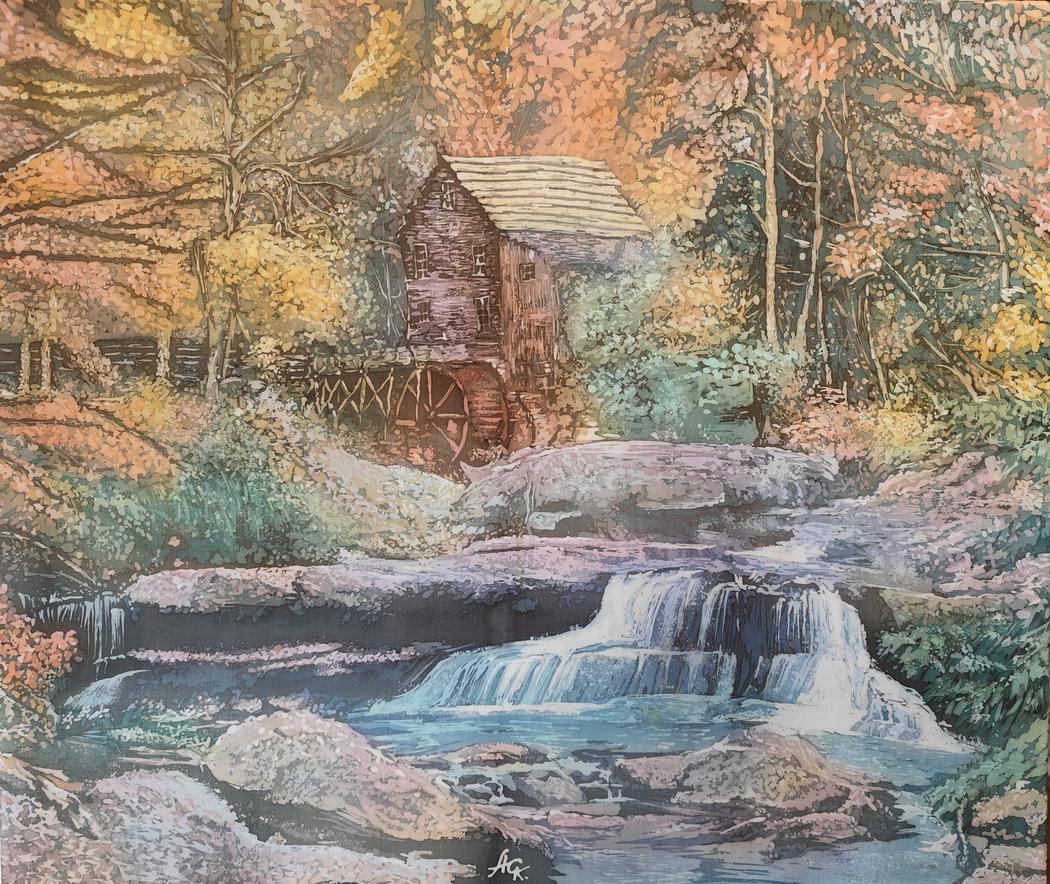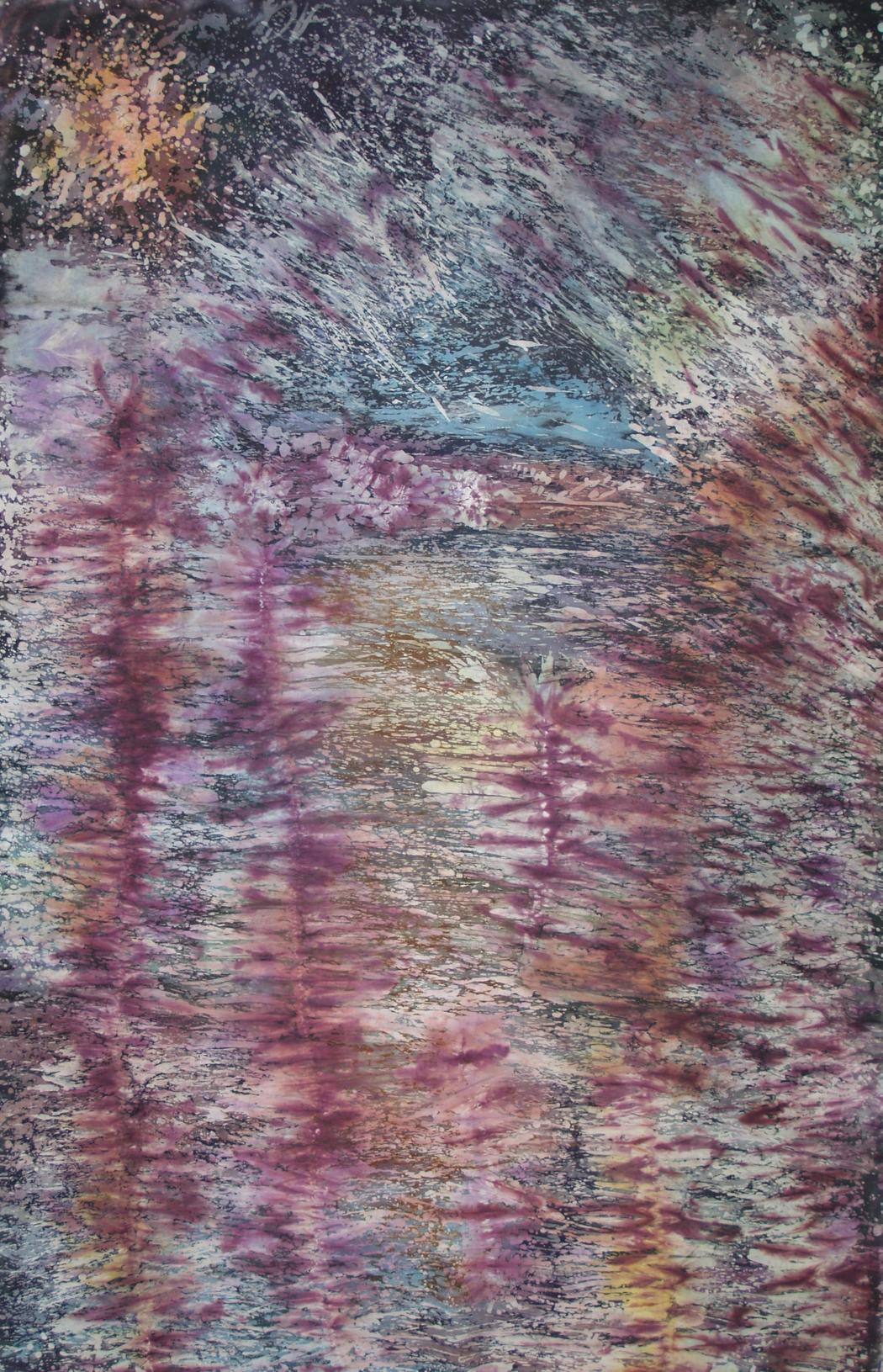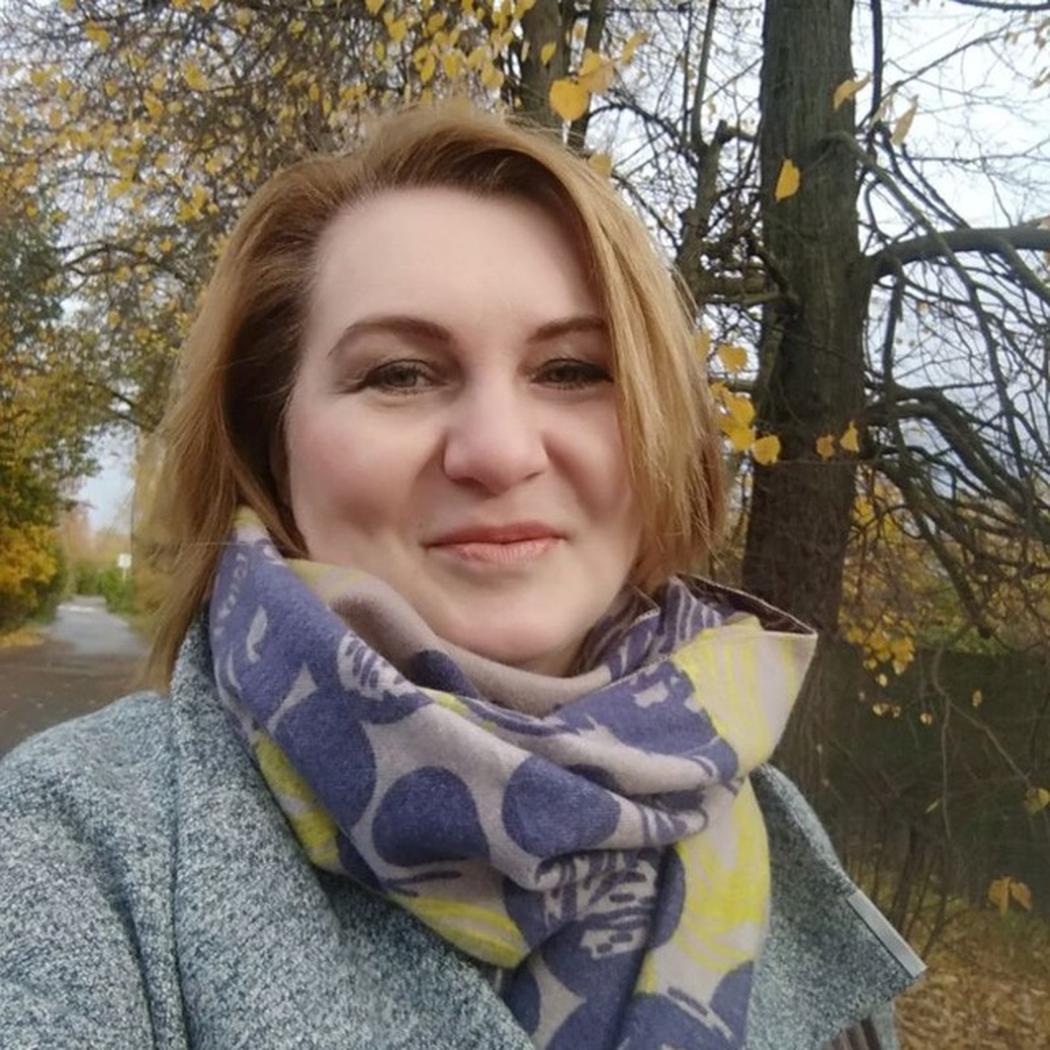Anna Skripova
Your education: Higher technical
Describe your art in three words: Symbolic · Meditative · Transparent
Your discipline: Fabric painting, oil, watercolor
Your works on silk seem to carry light within them — almost like illuminated memories. How did you first discover batik as a medium, and what keeps you fascinated by it?
My introduction to batik began many years ago. It was not simply an encounter with a new technique, but rather the fulfillment of a long-held dream. I had always been drawn to silk—its transparency, gentle glow, and the way it seems to hold light within the fabric. I often imagined how paint spreads across its surface, creating living lines and unpredictable color transitions. These thoughts led me, as if by a delicate thread, to a phrase that once became symbolic for me: “Today you are where your thoughts have brought you.”
That is how I met my Teacher, who became a true guide into the world of batik. He revealed to me the secrets of this art form. Since then, I feel as if I have entered another dimension—a space where light and color intertwine with the movement of the soul.
What inspires me in batik to this day is its vitality, its unpredictability, its ability to respond to the slightest emotion. Paint on silk behaves like living water—it spreads, merges, resists—and within this dialogue, truth is born.
Each piece is an attempt to capture a fleeting moment, to hold the light that lives within. Perhaps that is why my paintings resemble luminous memories—they preserve the echo of what has been felt and invite the viewer to touch this quiet miracle.
 Anna Skripova | Reflections | 2024
Anna Skripova | Reflections | 2024
You mentioned that you transitioned from photorealism to abstraction. What prompted this shift, and how did it change your relationship with painting?
My transition from photorealism to abstraction became a step toward freedom.
I was once fascinated by precision—the ability to capture the tiniest details, the play of light, the breath of nature.
But over time, I began to feel that behind this outer truth, the inner resonance was getting lost.
The painting ceased to be a living experience, and that’s when I allowed myself to move beyond the boundaries of form.
Abstraction opened up a new space of feeling and light for me. The paint began to flow freely, color started to sound like emotion, and the process turned into a dialogue with the material.
Now, painting for me is not a copy of reality, but a way to listen to myself and let the viewer sense that inner light that exists beyond the visible.
 Anna Skripova | The Autumn Waltz | 2023
Anna Skripova | The Autumn Waltz | 2023
Many of your artworks evoke both serenity and mystery — as if they exist between dream and reality. How do you balance emotion and structure in your compositions?
For me, the balance between emotion and structure is like a morning in the fog — when the first rays of sunlight have not yet dispersed the transparent haze, but already begin to reveal the contours of the world.
Emotion is the breath of the painting, its inner vibration. I search for it in fleeting sensations — in the rustle of wind, the glimmer of water, a brief moment that cannot be repeated.
But if one follows only feeling, everything dissolves into chaos. That’s when structure comes to the rescue — the invisible rhythm that holds the composition in balance.
I love when these two forces meet. When a line suddenly yields to a patch of color, and form gives way to movement. It is precisely in this transition — on the edge between control and freedom — that the living breath of the painting is born. It creates that sense of calm and mystery that lingers with the viewer like the trace of a dream not yet fully faded at dawn.
 Anna Skripova | My Pink Locks | 2021
Anna Skripova | My Pink Locks | 2021
The “luminous” layering technique you use gives your pieces a stained-glass quality. Could you share more about your process and how you achieve this effect?
The “glowing” layer effect for me is not just a technical device but a way to convey the breath of light — its movement through fabric and paint. The work begins with the most transparent tones, as if born from morning air where forms are not yet visible. Each subsequent layer adds depth, but rather than covering the previous one, it interacts with it — like an echo of light within space.
I build light not from above, but from within the painting itself. It is born between the layers, where paint and silk become a single living organism. The key is not to make it heavy, not to “seal” this breath — but to leave space where light can pass freely through the material.
Contrasts here act as a pulse. Warm and cool shades, dense and translucent areas create an inner shimmer — that same sensation of stained glass, when it seems the surface glows from within.
In this technique, much depends on intuition. I move from light to shadow until the balance appears — the moment when the work seems to come alive on its own, like a window through which one can see not only color, but the silence of light itself.
 Anna Skripova | My Ghosts | 2022
Anna Skripova | My Ghosts | 2022
Nature — mist, water, and light — appears to play a strong role in your art. What inspires your palette and atmosphere when you begin a new work?
Nature for me is not a backdrop but a living presence — a companion with whom I carry on an endless dialogue. Mist, water, and light are not merely elements of a landscape; they are states of the soul. They reveal to me the mood, the breath of the future work, its rhythm, and its palette.
I don’t seek to reproduce what I see literally. What matters to me is to capture the inner tone — that barely perceptible line between stillness and motion, clarity and haze. The palette is born from feeling, not from intention: soft gray-blue hues like the breath of a cold morning, muted golden tones like the memory of sunlight frozen in water.
Mist attracts me with its ability to conceal and reveal at once. It creates space for imagination — as if leaving the viewer room to complete their own world. Water is a mirror where reality meets reflection, and light is like an invisible thread binding everything together.
When I begin a new work, I don’t choose the colors — they come on their own, like memories. Perhaps from childhood, from the smell of rain, from a moment when the sun touches the surface of a lake. And in that moment, nature ceases to be an object and becomes a co-author — together with me, it paints a picture where every shade holds the breath of the living world.
 Anna Skripova | Karelian Sunsets | 2024
Anna Skripova | Karelian Sunsets | 2024
Do you see your silk paintings and oil works as separate worlds, or do they communicate with one another?
My works on silk and on canvas are not separate worlds, but two breaths of the same process. They are like day and dusk: different in light, yet belonging to the same element.
Silk is fluid, elusive. It breathes, reflects light, lives by its own laws. On it, the paint seems to choose its own path, and I merely accompany it, trying to capture the moment before it dissolves. Here arise fragility, transparency, the feeling of a dream one does not wish to wake from.
Canvas is the opposite of silk, yet also its continuation. It provides stability, demands focus and clarity. Here I can build form, find rhythm, give thought a body. It is a space for reflection, where feelings take on structure.
Between these two materials there is a constant exchange. After working on silk, I bring more light and air into the canvas; after the canvas, more inner balance and precision. It is like breathing—inhalation and exhalation, movement back and forth.
In the end, both silk and canvas are simply different ways for me to speak about what cannot be said in words. Each has its own timbre, yet the voice is one.
When viewers encounter your work, what would you like them to feel or remember?
I want a person, when looking at my paintings, to pause for a moment and look inward. In the soft hues of mist, in the reflection of water, or in the diffused light, I hope they recognize their own feelings — quiet joy, nostalgia, the warmth of childhood memories.
It is important to me that the viewer doesn’t just look, but listens inwardly. My works do not demand explanation; they simply create a space where one can remember what was forgotten, feel what was lost, and find peace.
If after encountering a painting there remains a sense of light — even a barely perceptible one — it means the dialogue has taken place. For me, painting is a way to remind: the beauty of the world lives within us; we only need to let it be heard.


Leave a Reply